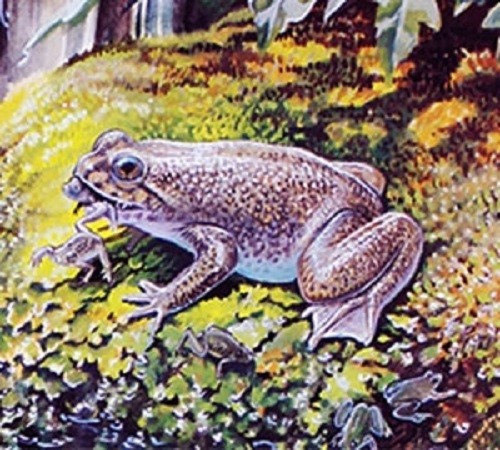
In a major step, scientists have revived the genome of an extinct Australian frog that gives birth through its mouth.
The extinct frog Rheobatrachus silus is one of the two species of gastric-brooding frogs or Platypus frogs that are native to Australia. They swallowed their eggs, brooded their young ones in their stomach and gave birth through their mouth. These frogs belong to the genus of ground-dwelling frogs and became extinct in the mid-80s.
A team of Australian scientists involved in the Lazarus Project ("de-extinction" project) are aiming to bring back to life the extinct Rheobatrachus silus frog. They recovered cell nuclei from the tissues of the frog collected in the 1970s and preserved in an conventional deep freezer for about 40 years.
Scientists used a laboratory technique known as somatic cell nuclear transfer. This technique was used to clone Dolly, the sheep. Dolly was the first mammal to have ever been cloned using adult animal cells in 1996. However, the sheep did not survive for long years and died in 2003.
In case of the extinct frog, researchers took donor eggs from the distantly related Great Barred Frog, Mixophyes fasciolatus (another Australian ground-dwelling frog), and inactivated the egg nuclei. It was replaced with dead nuclei from the extinct frog. Some of the eggs began to divide and grow into an early embryo stage. But none of them survived after a few days. Based on genetic tests, researchers confirmed that the dividing cells have genetic material belonging to the extinct frog.
"We are watching Lazarus arise from the dead, step by exciting step," the leader of the Lazarus Project team, Professor Mike Archer, of the University of New South Wales, said in a statement. "We've reactivated dead cells into living ones and revived the extinct frog's genome in the process. Now we have fresh cryo-preserved cells of the extinct frog to use in future cloning experiments," he said.
This is not the first time that researchers are working towards cloning an extinct animal. For instance, scientists are hoping to clone the woolly mammoth that became extinct 10,000 years ago. Remains of the giant mammal have been found mostly in the permafrost of Serbia. But their living cells required for the cloning process are yet to be found.





!['Kaise ho bhai..': PM Modi shook hands with Akshay Kumar at a media summit in Delhi [Watch]](https://data1.ibtimes.co.in/en/full/806317/kaise-ho-bhai-pm-modi-shook-hands-akshay-kumar-media-summit-delhi-watch.jpg?w=220&h=138)











